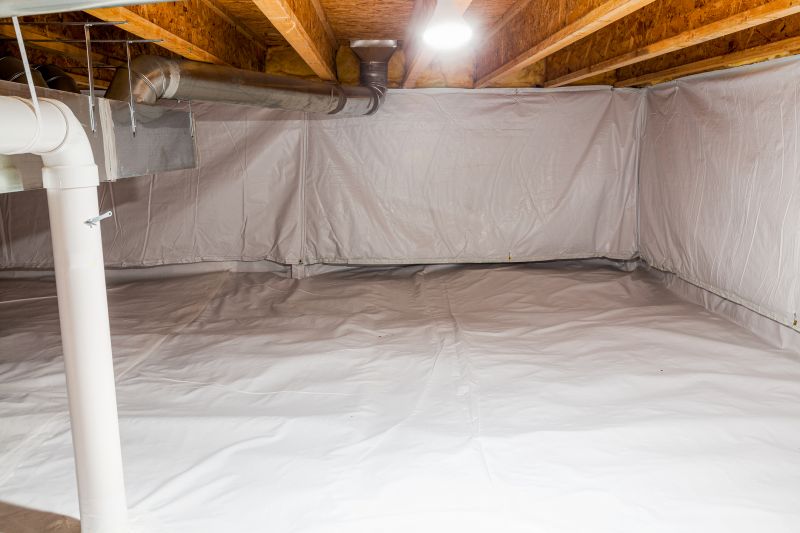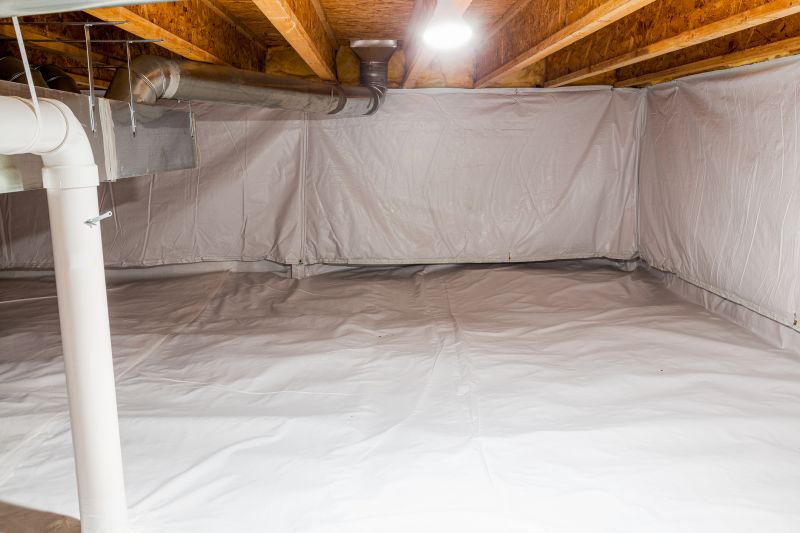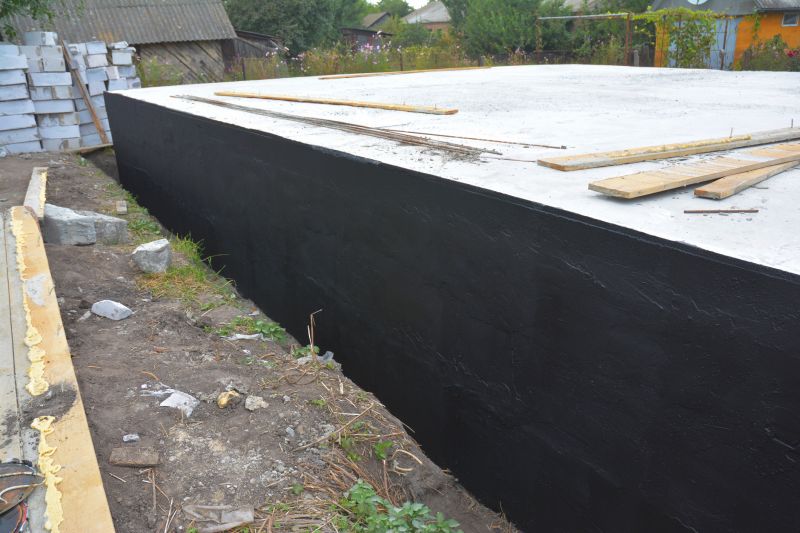Transform Your Crawlspace for Better Living Conditions
Crawlspace encapsulation is a comprehensive process designed to protect and improve the condition of a building's foundation area. Proper encapsulation involves sealing the crawlspace with durable materials to prevent moisture intrusion, reduce mold growth, and improve indoor air quality. This service is essential for maintaining structural integrity and creating a healthier living environment.
Encapsulation prevents excess moisture from entering the crawlspace, reducing the risk of wood rot, mold, and structural damage.
Sealing the crawlspace helps maintain consistent indoor temperatures, leading to lower heating and cooling costs.
Reducing mold and dust mites in the crawlspace can improve indoor air quality and reduce allergy symptoms.
A sealed crawlspace discourages pests such as rodents and insects from nesting and entering the home.

A fully encapsulated crawlspace showing sealed walls and flooring, with proper insulation and vapor barriers.

Installation of vent covers to prevent outside air and moisture from entering the crawlspace.

Proper insulation combined with vapor barriers to maintain temperature and moisture control.

A clean, organized, and sealed crawlspace ready to protect the home from moisture and pests.
Neglecting crawlspace encapsulation can lead to serious issues such as increased humidity, mold growth, and structural deterioration. Without proper sealing, moisture can seep into the foundation, causing wood rot and attracting pests. These problems can compromise the safety and value of the property, leading to costly repairs over time.
| Benefits of Crawlspace Encapsulation | Risks of Not Encapsulating |
|---|---|
| Improved Indoor Air Quality | Increased mold and allergen presence |
| Lower Energy Costs | Higher heating and cooling expenses |
| Enhanced Structural Integrity | Potential foundation damage |
| Pest Prevention | Rodent and insect infestations |
| Moisture Reduction | Wood rot and mold growth |
| Increased Property Value | Decreased home value due to damage |
| Reduced Humidity Levels | Damp and musty odors |
| Better Climate Control | Unstable indoor temperatures |

